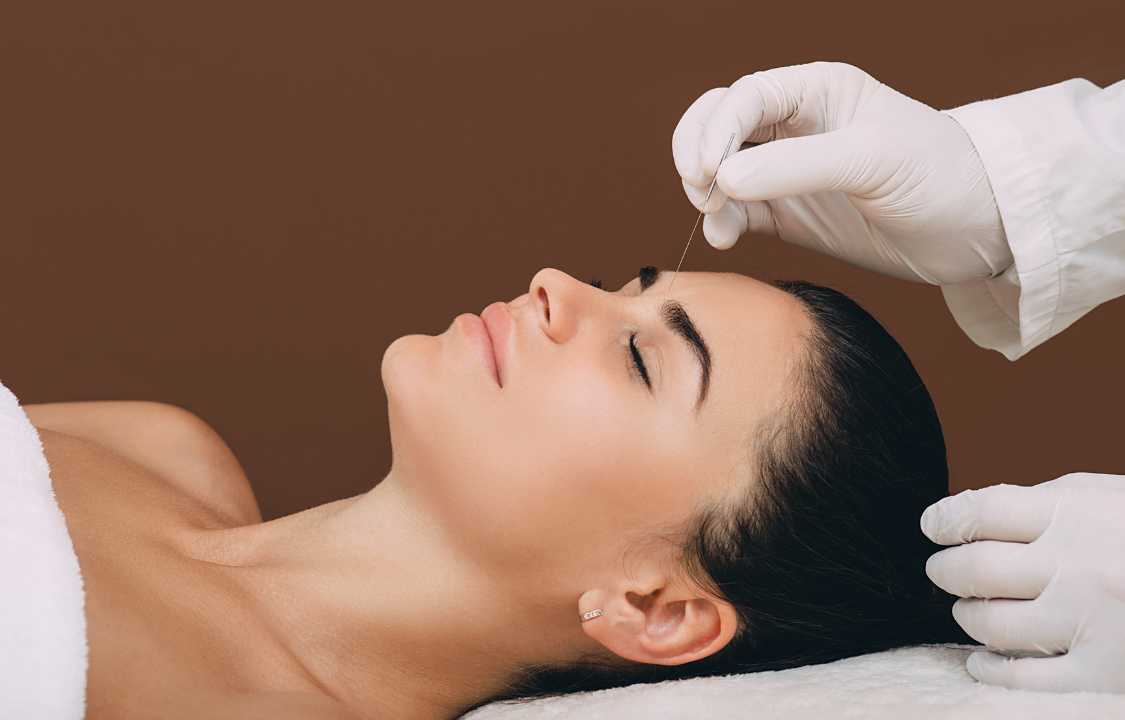Health Benefits, Insight
Acupuncture for Migraines: What Doctors Want You to Know About the Benefits and Risks
Some people may find that it’s an effective addition to standard treatment.
Acupuncture, a practice that involves stimulating specific points on the skin, often through the use of fine needles, has a rich history spanning thousands of years in Asian countries. Rooted in traditional Chinese medicine, it has piqued the curiosity of Western medicine in recent years, as healthcare providers seek to fathom its potential benefits for their patients.
While Western medicine has made significant strides in unraveling the mysteries of acupuncture, much remains to be understood about its efficacy, particularly concerning its role in alleviating migraine headaches. In this exploration, we delve into the realm of acupuncture and its potential to offer respite to migraine sufferers.
The Essence of Acupuncture: A Glimpse into the Practice
At its core, acupuncture involves the precise stimulation of distinct areas of the skin, often accomplished through the insertion of slender needles. This age-old practice, an integral facet of traditional Chinese medicine, has withstood the test of time. The National Center for Complementary and Integrative Health acknowledges its enduring presence and influence.
An Odyssey into Migraines and Acupuncture
The crux of the matter revolves around a fundamental question: Can acupuncture serve as a beacon of hope for migraine sufferers? The answer, though not yet definitive, carries a glimmer of optimism.
Dr. Mason Dyess, a distinguished general neurology and headache medicine physician at Ochsner Medical Center in New Orleans, acknowledges the uncertainty shrouding acupuncture’s role in managing migraines. “We do not have enough evidence for me to strongly say acupuncture is helpful or hurtful,” he asserts.
Nonetheless, within this nebulous landscape, a series of smaller-scale studies and systematic reviews have begun to shed light on the potential benefits of acupuncture in the realm of migraines.
Dr. Dyess highlights a systematic review published in the journal Headache in 2019. This comprehensive analysis encompassed seven clinical trials, collectively involving 1,430 participants, juxtaposing acupuncture against conventional pharmacological treatments for migraines. While several individual studies hinted at acupuncture’s superiority over standard treatment, the amalgamation of results remains a challenge due to the heterogeneity of their testing methodologies.
Thus, at this juncture, the verdict regarding acupuncture’s definitive impact on migraines still remains elusive. Nevertheless, experts like Dr. Robert Cowan, a distinguished professor of neurology and chief of the division of headache medicine at Stanford University, emphasize that acupuncture and acupressure are valuable tools within the medical toolkit.
Gleaning the Benefits of Acupuncture for Migraines
Despite the ongoing debate surrounding acupuncture’s efficacy in migraine management, a trove of studies suggests that this practice is both safe and potentially beneficial. While large-scale randomized controlled trials are needed to ascertain its clinical merit fully, extant evidence points to one promising advantage: a reduction in migraine frequency and duration.
Intriguingly, a systematic review from 2016 revealed a noteworthy outcome. It observed that over half of the patients receiving acupuncture treatments experienced a remarkable 50% reduction in headache frequency after six months. These findings, reported by the American Migraine Foundation, hold promise in the realm of migraine management.
Dr. Dyess, drawing from his clinical experience, reports a spectrum of outcomes among his patients. While some individuals experienced a mild reduction in headache frequency and intensity, others derived no relief from acupuncture. It’s essential to bear in mind that the efficacy of migraine treatments can vary widely among individuals, emphasizing the need for personalized care.
Navigating the Risks of Acupuncture in Migraine Management
Acupuncture is generally considered a low-risk therapeutic modality, particularly when administered by a proficient practitioner, as per the Mayo Clinic. Standard practice now dictates the use of single-use disposable needles to minimize infection risks associated with skin penetration. While individuals may encounter mild soreness, slight bleeding, or bruising, such side effects are generally minor.
Nonetheless, certain individuals should exercise caution or abstain from acupuncture:
1. Bleeding Disorders or Blood Thinners: People with bleeding disorders or those taking blood thinners should be mindful, as these factors elevate the risk of bleeding or bruising from needle insertion.
2. Pacemakers: Individuals with pacemakers should steer clear of acupuncture that employs electrical pulses, which can potentially interfere with the functioning of these devices.
3. Pregnant Individuals: Specific acupuncture techniques are believed to induce labor, making it imperative for pregnant individuals to exercise caution.
Prerequisites Before Embarking on Acupuncture for Migraines
Dr. Cowan underscores that acupuncture should be viewed as an integral component of a broader therapeutic approach, rather than a standalone solution. Traditional Chinese medicine encompasses various modalities, including moxibustion, herbal remedies, and more. In the same vein, one should seek an acupuncturist who possesses comprehensive knowledge, avoiding practitioners with a singular focus on acupuncture.
Moreover, the selection of a healthcare provider should be driven by a quest for guidance and recommendations rather than the anticipation of a prescribed treatment. Trust in your provider’s expertise to determine the most suitable course of action, whether rooted in Western or traditional Chinese medicine or other complementary therapies.
For individuals pursuing a Western medicine path, Dr. Dyess advises continuity in existing migraine management strategies. Research demonstrates the effectiveness of preventive medicines, and acupuncture can serve as a supplementary therapy in tandem with established treatments.
In summary, the evolving landscape of acupuncture in migraine management reflects a confluence of uncertainty and promise. While the definitive verdict awaits further scientific inquiry, acupuncture emerges as a valuable asset in the multifaceted realm of migraine care. Its potential to reduce migraine frequency and duration, coupled with its low-risk profile, instills hope in the hearts of migraine sufferers seeking holistic solutions.
As we navigate the intricate tapestry of migraine management, the synergy between Western and traditional therapeutic modalities holds the key to comprehensive care. In the pursuit of wellness, we must embrace the diversity of approaches at our disposal, ensuring that each patient’s unique needs are met with tailored, evidence-based solutions.

